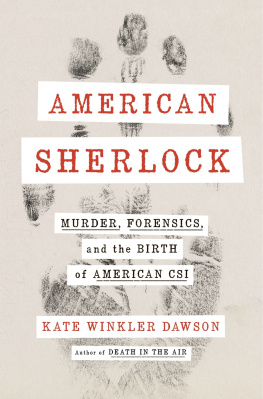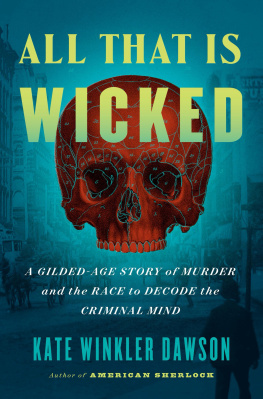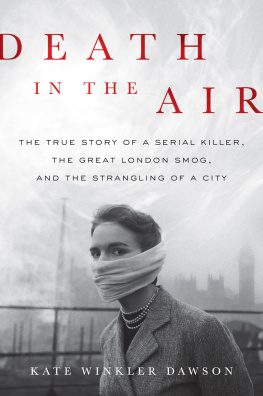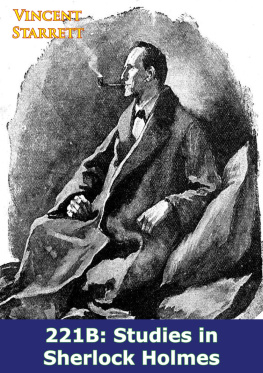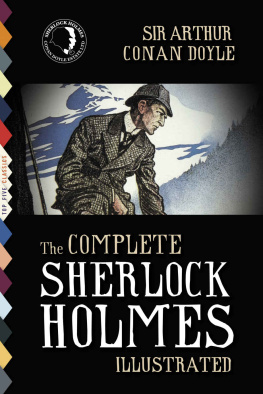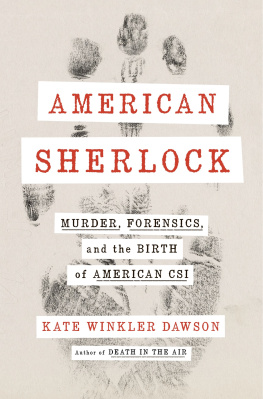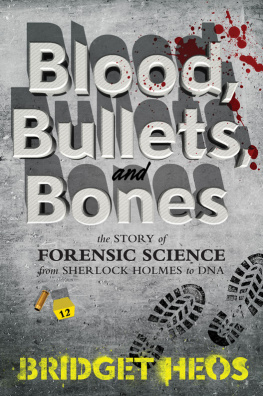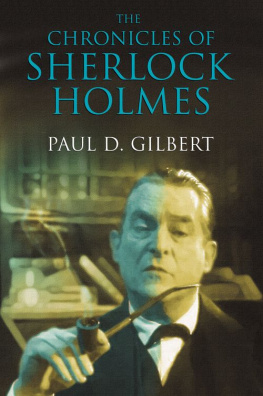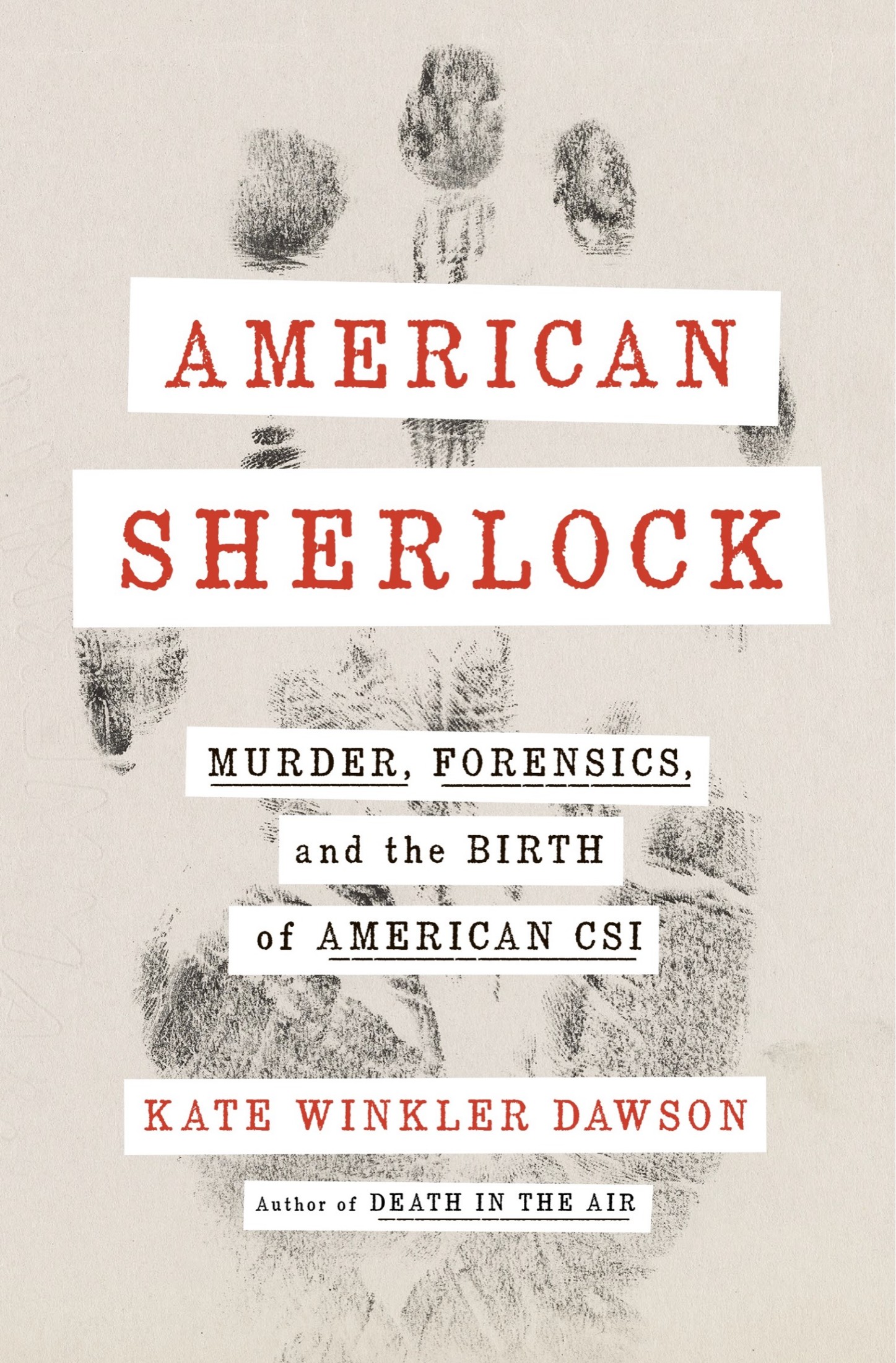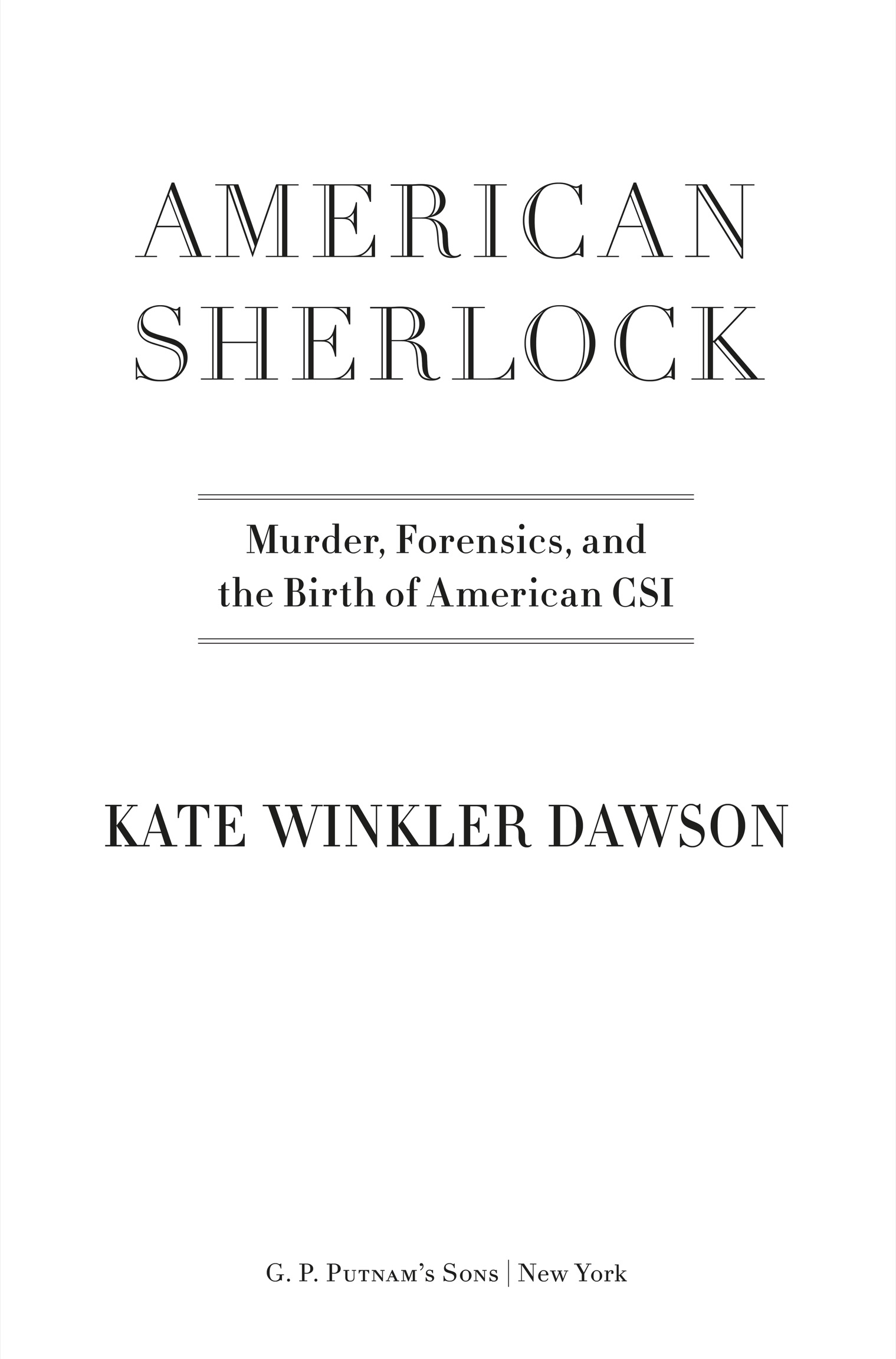PROLOGUE
Tales from the Archive:
Pistols, Jawbones, and Love Poetry
His upper jawbone was massivea long, curved bone with nine tiny holes meant to hold his teeth. The remainder of his skeleton was blackened by a fairly large fire ignited by an anonymous killer. Lifting up the jawbone, I examined the small blades of grass that adhered to its exteriororganic evidence from his hillside grave in El Cerrito in Northern California.
It was distressing to hold a bone that had belonged to a murder victim, particularly one who was never identified. I glanced over at the archivist, Lara Michels, who quietly stood across the wooden desk inside the massive warehouse. Whats next? I asked.
She led me down a long row of large cartons, more than one hundred boxes donated by the same owner. I had been given exclusive access to a trove of material collected over five decades by a brilliant man, a forensic scientist and criminalist from the first half of the twentieth century, a man who changed how crimes were solved before forensics became the foundation of most criminal casesAmericas Sherlock Holmes. I walked along the tight corridor, scanning the labels on the cardboard boxes for a common name: Edward Oscar Heinrich.
When Heinrich died in 1953, at the age of seventy-two, his youngest child, Mortimer, waited sixteen years to donate the contents of his fathers laboratory, a bastion of forensic history that once monopolized the ground floor of Mortimers childhood home in Berkeley, California. In 1968, he bequeathed his fathers many boxes, containing case files, evidence, personal diaries, letters, even romantic poetry, to the University of California at Berkeley, Oscars alma mater and the college where he spent years teaching forensic science. The archive was an incredible repository of information, but given the universitys limited budget for archival material and research, the collection remained uncatalogued and untouched for more than fifty years.
In 2016, I discovered Oscar Heinrich hidden in a short article that lauded one of his most famous cases, the Siskiyou train robbery of 1923. Astonished that no contemporary author had penned a book about him, I requested that UC Berkeley open his collection for research. Michels agreed, and after more than a year of waiting, I began to immerse myself in the bizarre world of Oscar Heinrich, the most famous criminalist youve likely never heard of.
The boxes contain more than one hundred thousand pieces of information, such as photographs, notes, letters, sketches, and trial transcripts. It was an overwhelming and disorganized collection that was housed in the schools off-site processing center. Heinrich seemingly kept everything from his life (personal and professional), manically collecting notes written on napkins, thousands of newspapers, hundreds of bullets, and dozens of financial journals. I began jokingly describing him as a productive hoarderuntil my colleague, a psychology professor, at the University of Texas suggested that he had in fact fit the diagnostic criteria for obsessive-compulsive personality disorder, which occurs in just 1 percent of the population. People with OCPD have a preoccupation with perfectionism, control, and ordera neat life. They are frequently extremely productive and successful, but their personal relationships often suffer because their rigidity can manifest itself in righteousness, even anger when their control is threatened. Heinrichs already-stressful life was certainly complicated by his OCPD, but as an author and researcher, I was thankful for his fastidious habit of adding constantly to his collection. I was particularly grateful for the numerous boxes of evidence he had preserved from criminal cases.
The evidence was plentiful, spanning investigations that unraveled over decades. The archivist allowed me to examine pieces from a detonated bomb, a locket owned by a dead woman who was run down by her own car, a lock of hair belonging to an actress who died during an infamous party, and several pistols that required having their firing pins removed by UC Berkeley police.
As I picked up the first photo, I was struck by something that seemed like an odd observation at the timeHeinrich was quite handsome for a tightly wound scientist. He was slight and not particularly tall, with thinning light brown hair. There was something about the sharp angles of his face that made him magnetic in photos, a confidence in his eyes as he cleaned a revolver.
I spent months staring at thousands of photographs, some taken by Heinrichs assistants and others developed by the criminalist himself (he was an avid photographer who relished documenting crime scenes). I noted hundreds of details, like the way he squinted as he adjusted the focus knob on his favorite microscope. The way his teeth gripped the bit of a straight-stemmed pipe as a small stream of smoke billowed from its bowl. The way his forehead wrinkled as he hunched over evidence. The way his round rimless glasses fit extra-snuggly around his templesa requirement for a chemist who spent much of his time leaning over a microscope.
As I flipped through those portraits, I gleaned more details about his private lab in Berkeley Hills, a lovely neighborhood overlooking San Francisco Bay. Heinrich was surrounded by odd devices. Every conceivable type of microscope was crammed onto a long wooden desk. Any extra space was surrendered to test tubes, crucibles, beakers, lenses, and scales. Behind Heinrich were shelves filled with hundreds of priceless books, at least priceless to a chemist turned forensic scientist. There were tomes on fingerprint identification, applied mechanics, analytic geometry, and powdered vegetable drugs.

